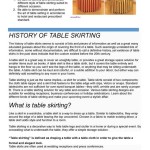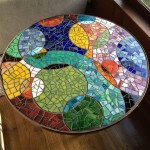Outdoor Barbecue Table Plans: A Comprehensive Guide
An outdoor barbecue table is an essential component of any well-equipped outdoor cooking and dining space. It provides a dedicated surface for food preparation, serving, and dining, enhancing the grilling experience and promoting social interaction. These tables come in various designs, materials, and sizes, catering to diverse needs and preferences. This article provides a comprehensive guide to understanding outdoor barbecue table plans, encompassing key considerations, design options, material selections, and construction techniques.
Key Considerations Before Embarking on a Project
Before acquiring or constructing an outdoor barbecue table, several factors warrant careful consideration. This initial assessment will inform the design process and ensure the final product aligns with the homeowner's specific requirements and limitations. The factors include space availability, intended use, budget constraints, and aesthetic preferences.
First, space availability is a primary determinant. The dimensions of the available outdoor area dictate the maximum size of the barbecue table. A large table in a confined space can impede movement and create an uncomfortable environment. Conversely, a small table in a vast area may appear disproportionate and inadequate for its intended purpose. Accurate measurements of the designated space are therefore crucial. These measurements should account for surrounding structures, such as walls, fences, and landscaping features. Moreover, consider the clearance needed for comfortable seating and movement around the table.
Second, the intended use of the table dictates its functionality and design. A table primarily intended for food preparation requires a durable, easy-to-clean surface, perhaps with integrated cutting boards or knife racks. A table designed for serving and dining necessitates adequate surface area for plates, cutlery, and serving dishes. If the table will also serve as a bar area, features such as built-in bottle openers, ice chests, or shelving for glassware may be desirable. Understanding the primary functions of the table is instrumental in determining the specific features to incorporate into the design.
Third, budget constraints invariably influence the material selection and complexity of the design. High-quality materials, such as exotic hardwoods or stainless steel, can significantly increase the project cost. Elaborate designs, involving intricate joinery or custom fabrication, also contribute to higher expenses. Establishing a realistic budget upfront is essential for making informed decisions about materials and design features. Exploring cost-effective alternatives, such as pressure-treated lumber or reclaimed materials, can help achieve the desired functionality without exceeding the allocated budget. Similarly, simplifying the design and opting for straightforward construction techniques can reduce labor costs.
Fourth, aesthetic preferences play a significant role in the overall appeal of the outdoor space. The barbecue table should complement the existing outdoor décor, incorporating elements that harmonize with the architectural style of the house and the surrounding landscape. Considering the color scheme, texture, and overall design aesthetic is essential for creating a cohesive and visually pleasing outdoor environment. Selecting materials and finishes that align with these preferences contributes to the overall satisfaction with the final product. For instance, a rustic aesthetic may call for reclaimed wood and wrought iron accents, while a contemporary aesthetic may favor sleek lines and stainless steel components.
Exploring Design Options for Outdoor Barbecue Tables
The design options for outdoor barbecue tables are virtually limitless, ranging from simple, functional designs to elaborate, multi-functional units. The choice of design depends on the factors outlined previously, including space availability, intended use, budget, and aesthetic preferences. Common design options include stationary tables, portable tables, and built-in tables.
Stationary tables are typically larger and more robust, designed to remain in a fixed location. They offer stability and ample surface area, making them ideal for food preparation, serving, and dining. Stationary tables can be constructed from a variety of materials, including wood, metal, stone, or a combination thereof. These tables often incorporate features such as built-in storage, shelving, or grilling surfaces. Because they are not intended for movement, stationary tables can be designed with heavier materials and more complex joinery, resulting in a more durable and aesthetically pleasing structure. However, the installation process is more involved and requires careful planning and execution.
Portable tables, conversely, are designed for easy relocation and storage. They are typically smaller and lighter than stationary tables, constructed from materials such as lightweight wood, plastic, or metal. Portable tables often feature folding mechanisms or detachable legs for convenient storage. These tables are ideal for smaller outdoor spaces or for individuals who require flexibility in their outdoor dining arrangements. While portable tables offer convenience and versatility, they may lack the stability and robustness of stationary tables. The choice of materials and construction techniques must prioritize portability and ease of handling, while preserving sufficient structural integrity.
Built-in tables are integrated into the existing outdoor structure, such as a patio or deck. They offer a seamless and customized look, enhancing the overall aesthetic appeal of the outdoor space. Built-in tables can be constructed from a variety of materials, matching or complementing the surrounding architectural elements. They often incorporate features such as built-in grills, sinks, or storage compartments. Built-in tables require careful planning and execution, as they are permanently affixed to the structure. The design must consider the existing structural framework and ensure proper drainage and ventilation. The installation process typically involves professional contractors and may require permits.
Beyond these broad categories, various design variations exist, incorporating specific features such as drop-leaf extensions, integrated ice chests, or built-in cutting boards. The design can also be customized to accommodate specific grilling equipment, such as smokers or pizza ovens. The key is to carefully consider the intended use of the table and incorporate features that enhance its functionality and user-friendliness.
Material Selection: Durability, Aesthetics, and Cost
The choice of materials is a critical aspect of outdoor barbecue table construction, influencing its durability, aesthetics, and overall cost. Materials commonly used for outdoor tables include wood, metal, stone, and composite materials. Each material possesses distinct properties, advantages, and disadvantages, impacting its suitability for a particular application.
Wood is a popular choice for outdoor tables, offering a natural aesthetic, warmth, and versatility. Various types of wood are suitable for outdoor use, including cedar, redwood, teak, and pressure-treated lumber. Cedar and redwood are naturally resistant to rot and insect infestation, making them ideal choices for outdoor furniture. Teak is a dense, durable hardwood that is highly resistant to weathering. Pressure-treated lumber is a cost-effective option, but it requires regular maintenance to prevent warping and cracking. Wood can be easily shaped and finished, allowing for a wide range of design possibilities. However, wood is susceptible to moisture damage, requiring regular sealing or painting to protect it from the elements.
Metal is another common material for outdoor tables, offering strength, durability, and a modern aesthetic. Common metals used for outdoor furniture include aluminum, stainless steel, and wrought iron. Aluminum is lightweight, rust-resistant, and relatively inexpensive. Stainless steel is highly durable and resistant to corrosion, making it an excellent choice for outdoor use. Wrought iron is a heavy, durable metal that offers a classic, elegant look. Metal tables can be finished with powder coating or paint to enhance their weather resistance and aesthetic appeal. However, metal can become hot in direct sunlight, requiring the use of cushions or umbrellas for comfortable use.
Stone offers a natural, rustic aesthetic and exceptional durability. Granite, slate, and limestone are common choices for outdoor tables. Stone tables are resistant to weathering and require minimal maintenance. However, stone is heavy and difficult to work with, requiring specialized tools and expertise. Stone tables are also relatively expensive compared to wood or metal tables. The weight of stone also limits its portability and makes it unsuitable for certain applications.
Composite materials, such as recycled plastic lumber, offer a low-maintenance and environmentally friendly alternative to traditional materials. Composite lumber is resistant to rot, insect infestation, and weathering. It is also available in a wide range of colors and textures, mimicking the look of natural wood. Composite materials are relatively easy to work with and require minimal maintenance. However, they may not possess the same aesthetic appeal as natural wood or stone and may be more expensive than pressure-treated lumber.

Diy Grill Cart Bbq Prep Table Free Build Plans
:max_bytes(150000):strip_icc()/charlestoncrafted-b52d47713ae44d57a8f06697b427b9fe.jpg?strip=all)
12 Diy Grill And Bbq Island Plans

Rolling Grill Table Kreg Tool

Rolling Grill Side Cart With Storage Houseful Of Handmade

Grilling Center Woodworking Plan Wood

Diy Grill Cart Bbq Prep Table Free Build Plans

Cedar Grilling Table Plans Diy Grill Barbecue Woodworking Outdoor Prep Gardening

Diy Grill Cart Bbq Prep Table Free Build Plans

Cedar Grilling Table Plans Diy Grill Barbecue Woodworking Outdoor Prep Gardening

5 Diy Big Green Egg Table Plans To Transform Your Grilling Space








